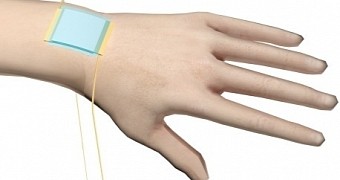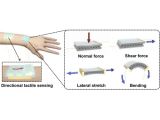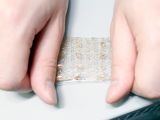Just a couple of days ago, a major breakthrough was achieved in the field of prosthetics, where scientists successfully created a new type of skin that could stretch without incurring harm. Now, another achievement has made itself known.
We weren't really sure the breakthrough was distinct from the other at first, having been published so close to the stretching skin, chronologically.
However, after reading through the two pieces of news, we've reached the conclusion that they really are distinct achievements. Even if Korean scientists were involved in both.
The stretching skin made of tiny sections with serpentine shapes that can lengthen when the skin stretches is the one we've already covered. It is infused with ultrathin gold and silicon sensors that substitute for natural touch support.
The research we're going to talk about today is for an electronic skin that can detect not only touches but also the direction they come from.
The traits of the electronic skin
Created by Korean researchers under the leadership of Hyunhyub Ko, the electronic skin is a flexible, film-like device that can detect pressure, read brain activity, monitor heart rate, or perform other functions.
Or at least it will be able to do all those things eventually. Reliably and swiftly. For now, focus is on tactile feedback.
In the past, microstructures found in beetles and dragonflies were the foundation on which the skin's very tiny segments were designed.
However, one thing that was never managed was to enable the skin to realize what direction the touch was coming from. This hurdle has finally been overcome according to a study published in the journal ACS Nano.
The new skin is made of tiny domes that interlock. The domes deform when poked or even when air blows across the skin.
Practical applications
Prosthetics and other rehabilitation devices are the main goals here, as you might expect. What we're wondering about now is if there is some way to merge this electronic skin with the stretchable one that we briefly spoke about previously. It could be a winning combination.
We suppose it boils down to whether or not the tiny domes in this one can be successfully fused to or mixed in with the little serpentine gold and polymer sections from that one.
We'll surely be rooting for it. With 3D printing technology making prosthetic limbs not just affordable but cheap, this breakthrough (bringing the sense of touch back) could be a blessing to them.

 14 DAY TRIAL //
14 DAY TRIAL // 


